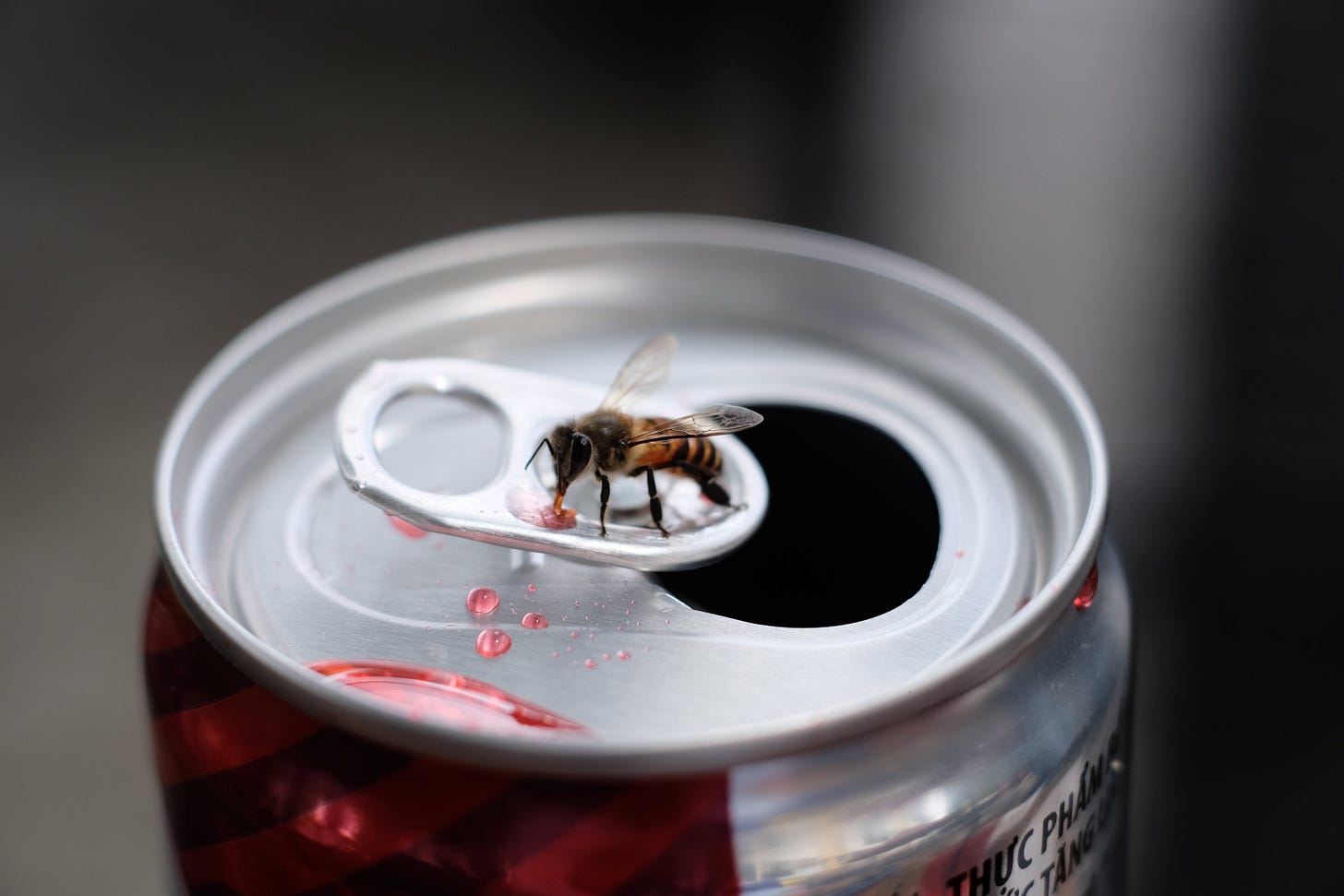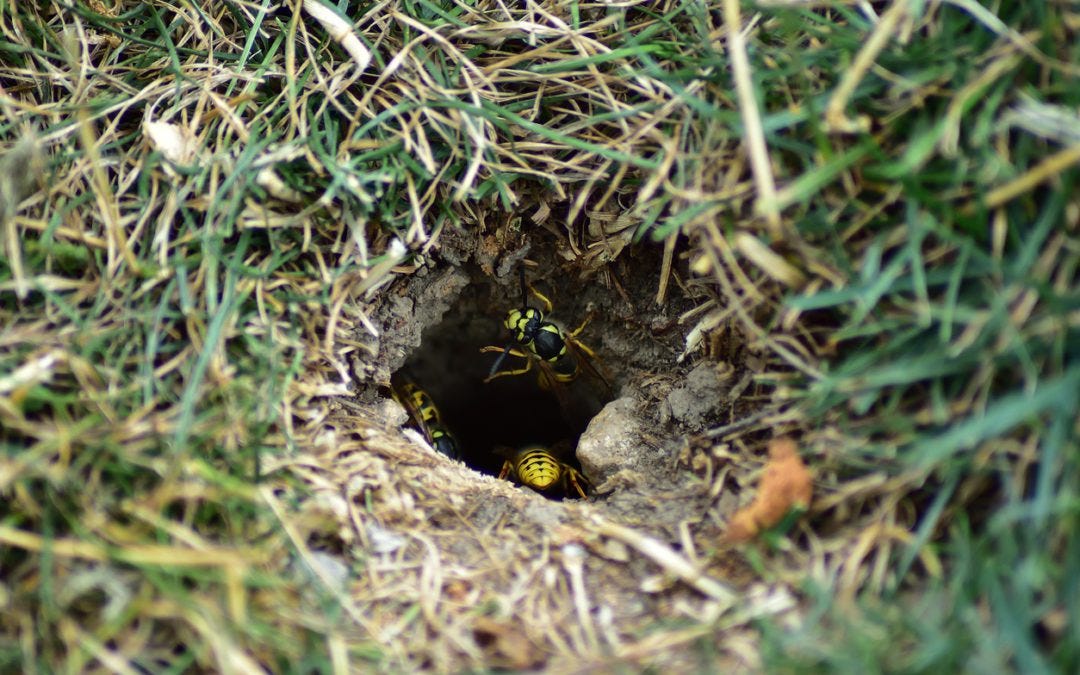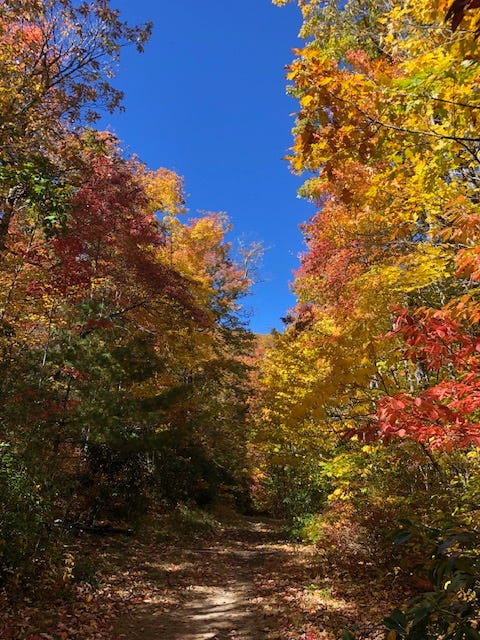
All the bees are about to die, and they want to take us with them.
That has been my personal theory on why, every fall, we find bees harassing us any time we stand still. Every fall, elementary school principals make announcements prohibiting kids from taking snacks on the playground right after the first kid gets stung eating an ice cream sandwich. Hikers wearing bright colors can’t apply enough bug spray. Aggressive bees follow us into our cars and lurk in the corners of the windshield.
This past weekend I accompanied around 80 other girls and women on a bike ride that was supposed to encourage more girls to mountain bike. But shortly after getting started, when we stopped to explore some caves, it just so happened we’d stopped beside a yellow jacket nest. First, two girls got stung, then three more ended up with bees in their hair and stings on their ears, and then mass pandemonium broke out. Seventy people headed back the way we’d come while the rest of us tried to figure out how to rescue the group on the far side of the nest. Meanwhile, the bees decided the bikes were their mortal enemy and set up a massive swarm:
We had to abandon the bikes and have the girls walk back out.
Granted, it’s possible one of the girls leaned her bike against the yellow jacket nest in the bank, which would tick off the bees at any time of year. But it has always seemed that bees are especially aggressive in the fall. Do they actually have a death-wish for the rest of the world? Or is there some other reason they’re so mad?
Why are bees so pissed off in the fall?
To be clear, it’s mostly yellow jackets that have a reputation for being aggressive and annoying in the fall. Honeybees and hornets don’t seem to have as many conflicts with humans, but yellow jackets nest in the ground, which means it’s a lot easier to stumble into a nest without meaning to.
Each nest starts in the spring with one queen, who wakes up after hibernating and creates a lone nest all by herself by chewing up bits of plants to make a type of paper. These paper nests look just like a regular hornet’s nest, just underground where we can’t easily see them. The queen then lays the eggs she was fertilized with the previous fall and about 30 days later she has her first workers.

Yellow jackets mostly feed on protein they get from eating other insects such as caterpillars, crickets, crop pests and flies. This makes them great pest managers. The workers only survive for 10-20 days, but the queen will live all summer, laying more eggs and creating more workers.
Which brings us to the fall. By then, the yellow jacket’s underground nest is much larger than the tiny start-up the queen created in the spring – there can be around 5,000 bees in a mature nest by the time August and September rolls around.
But once the colder weather starts, the first freeze begins to kill off the very insects yellow jackets need to survive. Just as yellow jacket populations are at their largest, their food supply begins to shrink.

Yellow jackets search far and wide for flies and grasshoppers, and when they don’t find them, they go for your sweet fruit, soft drink, or sugary ice cream instead. They are desperate for sustenance.
In the end, it seems that yellow jackets are especially aggressive in the fall because they’re HANGRY.
Unfortunately, there’s not much humans can do about it. Just stay away from known nests, don’t wear bright clothing that attracts them, and try not to swat or kill a yellow jacket – when you do, the dead bee releases a pheromone that attracts more bees from the colony.
Once the weather stays at 45 degrees for 5-7 days, the yellow jackets will die off, including the old queen. The only one to survive will be the new queen, who crawls into a hollow log or crevice until the weather becomes warm enough to start the process all over again.
Post Update
Thanks to reader Mike Bell who found an interesting follow-up to my story Why Aren’t Fruits and Vegetables as Nutritious as They Used to Be? While looking for organic farming supplies, he stumbled upon Neversink Farm in the Catskill Mountains of New York. They use radical farming practices that result in their being “one of the highest production farms per square foot in the country.” Check out their site and YouTube channel.
Weird Nature:
(click to view)







The life cycle and behavior of honeybees and yellow jackets is quite different, so in several places in your essay, I was a bit confused which you were writing about. Honeybees store honey in order to overwinter and do not forage during that time, nor are the colonies typically very aggressive. The summer bees that produce the honey stores are a distinct generation of short-lived bees (a few weeks), whereas the overwintering bees are long-lived (several months). The colonies are thus perennial. On the other hand, yellow jackets, in most of their range, are an annual species (as you noted). Only the mated queens overwinter, the workers dying off in the fall, probably from programmed death. For the first phase of the annual cycle, the colony produces workers to increase colony size, but in the late summer and fall phase, they invest a lot of resource in producing male and female sexuals. These mate (outbreed), the males die and the mated females overwinter, as you noted. I am not convinced that hunger is the source of their fall aggressiveness. Here is an alternate possibility--- the colony is protecting its sexual males and females because these are its future generation, its only hope of having a descendant colony in the following year. Considering that yellow jacket nests have long been preyed upon by large mammals such as bears, they have a lot of reason to be nasty in the fall. They are cuing to large, warm, carbon dioxide-emitting creatures, and don't stop to ask questions.
I'm so grateful we don't have yellowjackets here in New Zealand, because I'm horrified at the thought of not wearing bright colours to avoid enraging them. My entire wardrobe is chock-full of lime green, orange and lots of other loud colours. I'd be doomed!